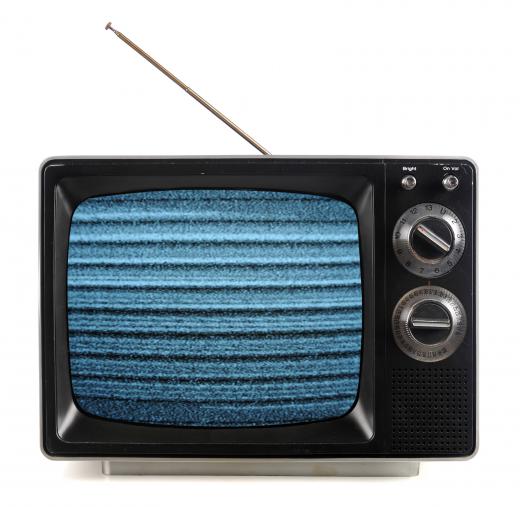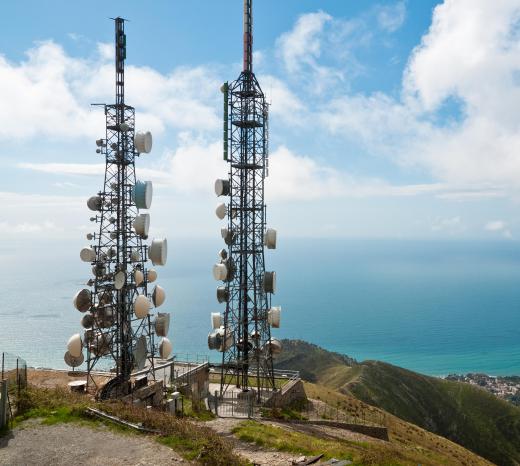What is the Difference Between Analog and Digital Signals?
The primary difference between analog and digital signals is that analog signals play recorded materials in their original form while digital signals play materials in a re-sample form. This accounts for the difference in quality between analog and digital signals, because digital broadcasts can be re-mastered to enhance sound and visual quality. Analog signals are more limited because they can only play what has been recorded as it was originally recorded.
Analog signals were once the only choice of technology when musicians or TV producers wanted to release a new record, eight track, or TV pilot. Analog signals work by taking a sound wave and recording it directly to a tape or other device. In other words, if a recording is made using an analog tape recorder, the sound waves go directly from the microphone onto the tape.

Although many people still prefer the more authentic and rough sound of a record being played, most would agree that digital signals are much higher in quality. This difference in analog and digital signals is what has led to the sharp decrease in the use of tapes and records and made way for the widespread enjoyment of compact discs (CDs) and digital video discs (DVDs).

Digital signals do not use a recording in its original form, but instead takes the original recording and turns into samples of numbers at a certain interval. These numbers are stored onto a digital device and then turned into a voltage wave. This wave gives an approximate rendition of the original recording. This technology has also given way for more sophisticated recordings.

Another main difference between analog and digital signals is that digital devices do not lose their sound quality over time. Video tapes and other analog devices may lose a little bit of quality with each use. Digital music and video devices, on the other hand, never lose their quality, no matter how many times they are played. As long as the numbers can be read, the digital sound will remain the same.
Many TV broadcasters are now required to present television shows in digital format. This works in the same way as digital music recordings, with pictures and sounds being converted into a series of numbers. In order for TV stations to continue being used on all digital stations, viewers must have a digital television, a digital converter box, or a cable or satellite receiver installed.
AS FEATURED ON:
AS FEATURED ON:













Discussion Comments
@hamje32 - Everything is going digital, especially television. If you’ve been really late to the game you can get an analog to digital signal converter box. It will convert your TV signals to digital so that you can watch digital television broadcasts. You can get these boxes pretty cheap; I have one and it was easy to install.
Without it, you won’t see anything unless you have satellite or cable television. The vast majority of television stations have made the switch to digital so you’ll have to switch one way or another if you want to keep receiving those signals.
@David09 - Yeah, I work in video on the side. I can tell you that in video production digital is the preferred standard. Some of the consumer grade digital camcorders are comparable in quality to the old Betacam standard, which was the gold standard for television broadcasting for a long time.
It’s become fashionable to say the digital camcorders are “broadcast quality,” and unless you are a trained video professional you won’t notice much of a difference.
Of course now High Definition video is all the rage, and it’s being output not only from the digital camcorders but the still cameras as well.
Right now they're both out of my price reach; call me a laggard with the new technology.
This is an excellent introduction on the difference between digital and analog signals. I’d like to add my own personal story to the mix, especially when it comes to video.
Years ago I made a decision to purchase a digital video camcorder. This was in early 2000. I did this after having watched a home video at a friend’s house, which used digital video.
To say I was stunned would be an understatement. The image was as sharp and as clear as anything I’ve ever seen in my life for a home movie. I also noticed that when he pressed pause that the image didn’t stutter, as it normally would have for an analog camcorder.
I purchased a high quality Sony digital camcorder and have never looked back since. The mini DV tapes are excellent quality and don’t go bad like my old VHS tapes did.
Post your comments